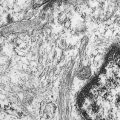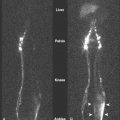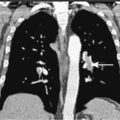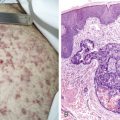- Tad Wieczorek
- Janina A. Longtine
Histopathologic assessment is still the cornerstone in the diagnosis, classification, and grading of malignancies. Light microscopic evaluation augmented by histochemical stains is sufficient in the majority of cases to provide adequate information for diagnosis and prognostication. However, it is limited by subjectivity and imprecision in the evaluation of poorly differentiated malignancies, tumors of unknown primary origin, and unusual neoplasms. In an era of increasingly sophisticated therapeutic protocols (which sometimes target the molecular events leading to cancer) and the need to maximize information gained from minimally invasive samples (such as core biopsy or fine-needle aspiration), ancillary techniques have been developed to increase the specificity and reproducibility of diagnosis. These rely on cell-specific antigen expression and, more importantly, tumor-specific genetic changes that provide diagnostic, prognostic, and/or therapeutic information.
In most instances the advent of monoclonal antibodies directed against cellular proteins, coupled with the immunoperoxidase technique, has superseded direct ultrastructural evaluation in allowing more accurate designation of the epithelial, mesenchymal, hematolymphoid, neuroendocrine, or glial origin of neoplasms. A cardinal example is immunolocalization of cytoskeletal intermediate filaments, which are differentially expressed in different cell types. Table 1.1 lists the intermediate filaments most useful in determining the cell lineage of tumors. The cytokeratins are a complex family of polypeptides that are expressed in various combinations in different epithelial cell types. Antibodies to cytokeratin subtypes can sometimes be used to identify the epithelial origin of a metastatic carcinoma of unknown primary site. For example, the pattern of reactivity for cytokeratin 7 (54 kDa), which is expressed in most glandular and ductal epithelium and transitional epithelium of the urinary tract, and for cytokeratin 20 (46 kDa), which is more restricted in its expression, has been helpful in this regard ( ).
| Cell Type | Intermediate Filaments | Molecular Weight or Subtype | Presence in Tumor |
|---|---|---|---|
| Epithelial | Cytokeratins | 40–67 | Keratinizing and nonkeratinizing carcinomas |
| Mesenchymal | Vimentin | 58 | Wide distribution: sarcomas, melanomas, many lymphomas, some carcinomas |
| Muscle | Desmin | 53 | Leiomyosarcomas, rhabdomyosarcomas |
| Glial astrocytes | Glial fibrillary acidic protein | 57 | Gliomas (including astrocytomas), ependymomas |
| Neurons | Neurofilament proteins | 68, 160, 200 | Neural tumors, neuroblastomas |
In addition to the intermediate filaments, other monoclonal antibodies to cellular or tumor antigens are available. In the past decade, advances in the technique of immunohistochemistry have allowed consistent, reliable application in routinely processed surgical pathology specimens ( ). Antigen retrieval techniques (including proteolytic digestion and heat-induced antigen retrieval), sensitive detection systems, automation, and a broad range of antibodies have all contributed to this advance. Table 1.2 lists a panel of antibodies that can be used in routine formalin-fixed paraffin-embedded tissue to diagnose poorly differentiated neoplasms. A differential diagnosis is generated by clinical and morphologic features, which can then be further refined by the use of immunohistochemistry. It is important to realize that the majority of antibodies are not entirely specific in lineage determination, and “aberrant” staining patterns are observed. In addition, there is biologic variation in poorly differentiated neoplasms resulting in variation in protein expression. Therefore, accuracy is enhanced by using a panel of antisera to determine lineage or primary site. One application of this principle is distinguishing between poorly differentiated adenocarcinoma and mesothelioma in pleural tumors. Table 1.3 demonstrates the differential immunoprofile.
| Malignancy | Keratin | Chromogranin Synaptophysin | S100 | MART-1 | LCA | OCT 3/4 | SMA/Desmin |
|---|---|---|---|---|---|---|---|
| Carcinoma | + | − | −/+ | − | − | − | − |
| Germ cell | +/− * | − | − | − | − | +/− | − |
| Lymphoma | − | − | − | − | + | − | − |
| Melanoma | − | − | + | +/− | − | − | − |
| Neuroendocrine | +/− | + | − | − | − | − | − |
| Sarcoma † | −/+ | − | −/+ | −/+ | − | − | +/− |
* Keratin is usually negative in seminomas but positive in nonseminomatous germ cell tumors.
† Sarcomas are a heterogeneous family of neoplasms, and immunohistochemical staining patterns depend on the specific histologic subtype.
| Malignancy | Keratin * | WT-1 | CD15 (Leu-M1) | CEA |
|---|---|---|---|---|
| Adenocarcinoma | + | − | + | + |
| Mesothelioma | + | + | − | − |
* Keratin positivity in the appropriate clinicopathologic setting limits the differential diagnosis to adenocarcinoma and mesothelioma.
Stay updated, free articles. Join our Telegram channel

Full access? Get Clinical Tree








